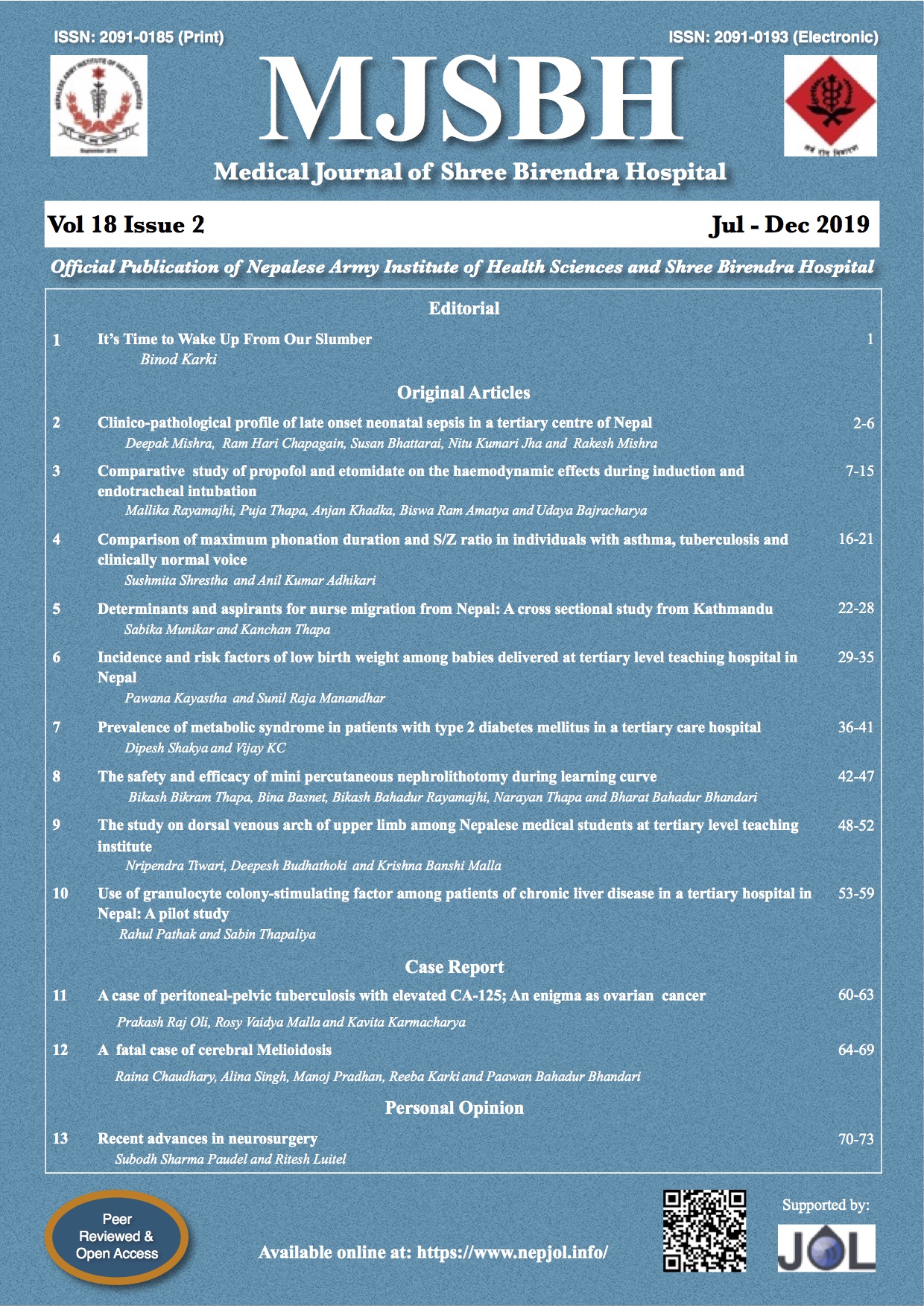Clinico-pathological Profile of Late Onset Neonatal Sepsis in a Tertiary Centre of Nepal
Keywords:
Antibiotic sensitivity, bacteriological profile, late onset neonatal sepsisAbstract
Background: Neonatal sepsis is a major cause of neonatal morbidity and mortality. Late onset sepsis (LOS) is associated with community environment or postnatal exposure to hospital environment. Its incidence is rising due to greater survival of preterm neonates and very low birth weight babies. Because of difference in local epidemiology and possible variation with time, regular monitoring and updates on pathogen and their antimicrobial sensitivity pattern is important for prevention and treatment. The objective of this study was to identify the common symptoms and signs and determine the common bacterial isolates and antibiotic susceptibility pattern of late onset neonatal sepsis.
Methods: This was hospital based prospective observational study conducted among the neonates admitted with diagnosis of late onset neonatal sepsis in Kanti Children’s Hospital from July 2016 to June 2017.
Results: Poor feeding (89.6%), fever/hypothermia (47.2%), excessive/ poor cry (40.8%) and irritability/lethargy (33.6) were the common symptoms. Staphylococcus aureus and Coagulase negative staphylococcus (CONS), the most predominant organisms, were isolated in 66.7% and 18.5% of culture positive cases respectively. Most of the isolated organisms showed sensitivity to cloxacillin (16/27), amikacin (15/27), ciprofloxacin (14/27), cefotaxime (11/27), cotrimaxazole (6/27) and amoxyclox (6/27).
Conclusion: Poor feeding, fever/hypothermia, excessive/ poor cry and irritability/lethargy were the common symptoms. This study has indicated possible emergence of Staphylococcus aureus as the dominant cause of late onset neonatal sepsis. Cloxacillin, amikacin, ciprofloxacin and cefotaxime were more efficacious against the commonly isolated bacteria in late onset neonatal sepsis.
Downloads
Downloads
Published
How to Cite
Issue
Section
License
This license enables reusers to distribute, remix, adapt, and build upon the material in any medium or format for noncommercial purposes only, and only so long as attribution is given to the creator.




